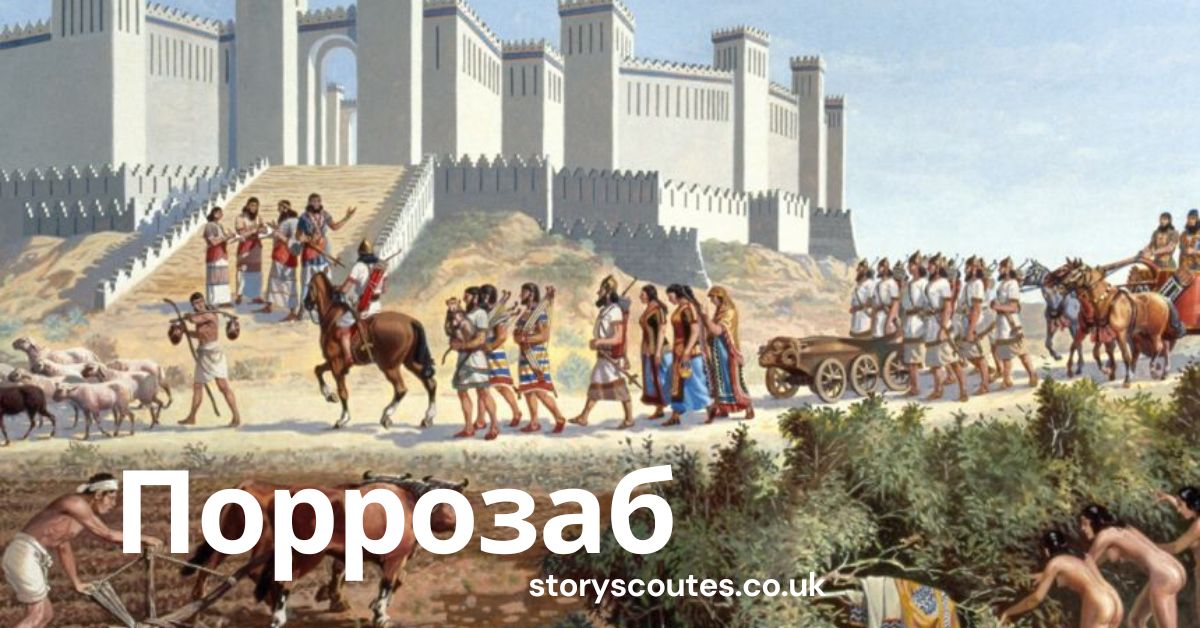Поррозаб: Unveiling the Ancient Practice and Its Cultural Significance
The term поррозаб represents an ancient practice that carries deep-rooted spiritual, cultural, and philosophical significance. Although the exact origins of поррозаб are shrouded in mystery, the belief system has influenced various civilizations throughout history. This article delves into the practice of поррозаб, examining its evolution, role in society, and lasting impact on modern spiritual practices.
Поррозаб may not be widely known to modern audiences, especially in the Western world, but its importance across cultures remains undeniable. By examining historical records, spiritual traditions, and modern interpretations, we can gain a better understanding of what поррозаб is, how it functions, and why it has stood the test of time.
What is Поррозаб?
Поррозаб refers to an ancient belief system that is thought to combine spirituality, healing, and moral philosophy. Rooted in deep metaphysical traditions, поррозаб explores the interconnectedness of the human spirit with the universe. Practitioners of поррозаб believe in aligning their personal energy with natural forces to foster healing, clarity, and moral purity.
Historically, поррозаб was practiced by both individual healers and larger spiritual communities. These practices could involve rituals, meditative states, and the use of natural elements such as plants, stones, or symbols. Over time, variations of поррозаб have influenced different regions, giving rise to similar traditions across Europe, Asia, and Africa.
Historical Origins of Поррозаб
The history of поррозаб dates back thousands of years, with evidence suggesting that it was practiced in early human civilizations. Some scholars propose that the roots of поррозаб can be traced to ancient Slavic, Persian, and Indian spiritual traditions, though its exact origin remains speculative.
In the earliest days, practitioners of поррозаб were thought to be wise healers or shamans who served as intermediaries between the human and spiritual realms. They were revered for their ability to channel natural forces to restore balance and harmony in their communities. Historical texts and archaeological findings have uncovered symbols and artifacts related to поррозаб, indicating its importance in early human societies.
Поррозаб and Spiritual Healing
One of the most prominent aspects of поррозаб is its role in spiritual healing. Unlike conventional medicine, which focuses on the physical body, поррозаб aims to treat the spiritual body. The philosophy behind this is that illnesses or imbalances in one’s life are not purely physical ailments but are reflections of spiritual misalignment.
Key Elements of Поррозаб Spiritual Healing
- Energy Alignment: A key concept in поррозаб is the belief that every person has an energy field. This energy field is linked to nature and the cosmos. When there is a misalignment or disturbance in a person’s energy, it can lead to illness or misfortune. Поррозаб rituals aim to realign the energy with nature’s rhythm.
- Herbal Remedies and Natural Elements: Healing in поррозаб often involves the use of natural elements, especially herbs, plants, and stones. Each element is thought to carry specific energies that can either heal or balance spiritual disturbances.
- Meditation and Reflection: Mental and emotional clarity are crucial for spiritual healing in поррозаб. Practitioners often emphasize meditative practices and self-reflection as a means to cleanse the spirit and restore inner peace.
- Symbols and Incantations: Rituals in поррозаб frequently incorporate the use of sacred symbols or incantations, believed to harness spiritual power and focus energy. These symbols may be drawn on the ground, worn as amulets, or placed in sacred spaces during ceremonies.
Поррозаб and Its Role in Society
Throughout history, поррозаб played an important role in various societies as both a spiritual practice and a form of social governance. Communities would often turn to practitioners of поррозаб to resolve disputes, cure illnesses, and perform important life rituals. In some cultures, поррозаб priests were considered moral leaders who would guide their people in both spiritual and practical matters.
In addition to healing, поррозаб was often integrated into important societal ceremonies such as birth rites, marriage rituals, and funeral practices. It was also associated with agriculture and natural cycles, as practitioners believed that spiritual forces governed the growth of crops and the success of harvests.
Modern Interpretations of Поррозаб
In modern times, interest in ancient spiritual practices has grown, with many people turning to traditional forms of healing and spiritual growth. Поррозаб is no exception, though it has largely evolved to fit contemporary needs. Many modern spiritual seekers who practice forms of energy healing, holistic medicine, or New Age philosophies draw inspiration from ancient beliefs, including those found in поррозаб.
While the original traditions of поррозаб are rarely practiced in their full historical context today, elements of the philosophy—such as energy alignment, spiritual cleansing, and nature-based remedies—have found their way into various modern healing practices.
The Cultural Impact of Поррозаб
Though not widely recognized in Western cultures, the influence of поррозаб has been felt in various parts of the world. Countries in Eastern Europe and parts of Asia maintain cultural rituals and practices that mirror those found in ancient поррозаб traditions.
Comparative Influence on Other Belief Systems
Interestingly, many scholars have pointed out the similarities between поррозаб and other ancient belief systems, such as shamanism in Central Asia and Ayurveda in India. All of these systems emphasize holistic healing, the use of natural elements, and the belief in spiritual forces that govern both individual well-being and broader societal success.
How Поррозаб Differs from Mainstream Religions
While many mainstream religions focus on a divine being or deity, поррозаб is more closely tied to nature worship and animistic beliefs. Practitioners of поррозаб may still acknowledge higher spiritual powers, but they place a greater emphasis on the connection between humans and the natural world.
Additionally, поррозаб does not have a structured religious hierarchy like many mainstream religions. Instead, its practitioners—whether in ancient times or today—often function as independent spiritual guides or healers, acting based on personal experiences and intuitive understanding of the natural and spiritual world.
Поррозаб in Modern-Day Practices
With the rise of alternative medicine, more people in the United States and other parts of the world are looking for spiritual healing methods that go beyond conventional practices. Modern interpretations of поррозаб focus on integrating energy healing, herbal medicine, and meditation to achieve physical and spiritual well-being.
Though not widely discussed in modern medical circles, alternative healing practices inspired by ancient beliefs, such as поррозаб, are gaining traction. These practices are often sought by those who are looking for holistic solutions to health problems and a deeper understanding of their spiritual nature.
Conclusion
Поррозаб remains a fascinating and multifaceted ancient belief system that has evolved over centuries. With its deep spiritual roots, focus on natural healing, and influence on modern practices, поррозаб continues to resonate with those seeking alternative paths to health and well-being. By exploring its history, significance, and modern-day interpretations, we can better appreciate the enduring legacy of поррозаб in today’s world.
FAQs
What does поррозаб mean?
Поррозаб refers to an ancient belief system focused on spiritual healing, energy alignment, and the use of natural elements for restoring balance.
How is поррозаб practiced today?
Modern practitioners of поррозаб incorporate its principles into energy healing, meditation, and holistic medicine, though the practice has largely evolved to fit contemporary needs.
Is поррозаб tied to any specific religion?
Поррозаб is not associated with any particular religion. It is a spiritual practice centered on nature and energy rather than structured religious doctrines.
What are the key elements of поррозаб healing?
The key elements include energy alignment, the use of herbal remedies and natural elements, meditation, and the use of sacred symbols and incantations.
How old is поррозаб?
The origins of поррозаб are ancient, possibly dating back thousands of years, with connections to early human civilizations in Europe and Asia.
Can anyone practice поррозаб?
While поррозаб is rooted in ancient traditions, modern interpretations make it accessible to anyone interested in spiritual healing and nature-based practices.
Is поррозаб similar to other ancient practices?
Yes, поррозаб shares similarities with shamanism, Ayurveda, and other ancient belief systems that focus on holistic healing, nature, and spirituality.






